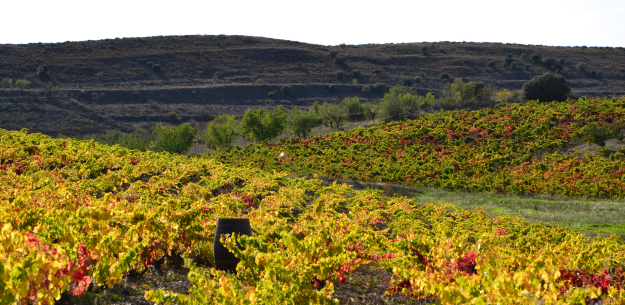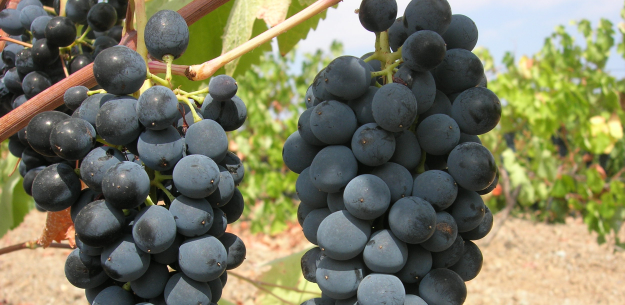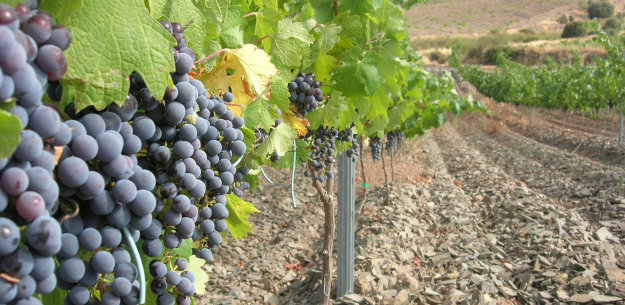.png.transform/rendition-xs/image_image%20(1).png)
Great Garnacha from Spain
The quintessential Spanish red grape Garnacha is a key component of some of Spain's most lauded wine blends. It is also the rallying cry of wine makers across several Spanish denominations of origins who are intent on preserving and, where necessary, restoring the star power of this historic red grape through single-variety wines that demonstrate its versatility and quality
Text: Adrienne Smith

Although frequently referred to in other parts of the world by its French name, Grenache, the origins of this important European grape – one of the most planted in the world – are almost certainly Spanish and can be traced back more than 500 years to the heart of Aragón, a Spanish Autonomous Community that boasts several of the most important Garnacha-producing designations of origin in Spain. The most significant of these are DO Cariñena and DO Campo de Borja, with 4,400 and almost 4,000 hectares of Garnacha, respectively, followed by DO Calatayud (2,000 hectares) and DO Somontano (218 hectares) in lesser amounts.
The varying landscapes, elevations and soil types of Aragon’s wine regions prove the versatility of Garnacha and its extreme adaptability. This late harvest grape is also highly resilient to adverse climate conditions and disease. Together, these factors help explain its success and distribution throughout Spain and beyond.
Given that thousands of hectares of Garnacha vines were uprooted in Spain starting in the 1990s to make way for trendier varieties, both Cariñena and Campo de Borja are particularly fortunate to have maintained their dedication to this quality, native grape, as well as to many of the coveted old vine Garnacha’s that yield wonderfully complex, robust and aromatic wines, which age superbly in oak. In fact, according to the Regulatory Board of DO Cariñena, this region has more old-vine Garnacha planted than any other in Spain.
For its part, DO Campo de Borja, the second most prolific Garnacha producer in Aragón and self-proclaimed "Empire of Garnacha", boasts 2,000 hectares of old vine Garnacha vineyards, which are between 30 and 50 years old. Here, this red grape accounts for 17.5 million kilograms or 46% of total production.
The mountainous DO Calatayud – of which 63% of vineyards are Garnacha – is often associated with cherry-colored, fruit-forward, juicy and somewhat spiced Garnacha wines. The region also boasts a newer category of red wines called "Calatayud Superior", of which a minimum of 85% must be made with Garnacha from vines that are at least 50 years old.
More old vines

These old vine Garnachas are also characteristic of neighboring DO Navarre, despite the fact that this region lost much of its Garnacha plantations to other varieties in the late 20th century. Though the Garnachas of this region are often associated with brightly colored, pleasantly fruity rosados, or fruity and fresh young reds, more recent years have seen the launch of warmly fruity and structured Garnacha wines – often with the fresh peppery nuances that are typical of this variety. Many of them hail from high-altitude vineyards and vines that are 50, 75 or even 100 years old.
Another area known for its quality Garnacha wines is the Sierra de Gredos mountain region. Comprised of various denominations of origin including DO Vinos de Madrid and DO Méntrida, this area of central Spain is at the junction of three regions: Madrid, Castile & León and Castile La Mancha. Much of the Garnacha in this area consists of old vines planted in valleys and on hillsides in the granitic soils of the Sierra de Gredos, which can lend the wines a somewhat salty note. The Garnachas here are highly aromatic, but are more mineral and less fruity than their counterparts in Aragón and Navarre, and they have less intense color and structure.
Essential blends

While Garnacha might not take top billing in DOCa Rioja and DOCa Priorat, either one of these famed regions would be virtually lost without it. Garnacha is the historic grape variety of the steep and dramatic region of Priorat, which is located in the southern Catalonian province of Tarragona. Though this grape was traditionally used here for single-variety wines with very mineral characteristics, it now often plays a significant role in the blends of "modern Priorat" – powerful wines to which it lends intense color and concentrated fruitiness.
Many of the wines of DOCa Rioja also depend on Garnacha to produce this region's typical blends. A classic Rioja wine might be comprised of approximately 60% Tempranillo and up to 20% Garnacha, in addition to smaller quantities of Mazuelo and Graciano. The Garnacha adds both structure and alcohol to these wines, thanks to the fact that it typically yields wines with around 14% alcohol – regardless of where the grapes are grown. It is also used frequently in this region to make bold and fruity rosado wines.
As in other regions, Garnacha responds particularly well to high altitudes here, with important cultivation areas including elevated zones of Rioja Baja. Although most of the region's historic Garnacha plantations were uprooted to make way for Rioja's current star, Tempranillo, there are still some old vineyards that are considered treasures of this variety.
White Garnacha
While red Garnacha or Garnacha tinta definitely rules in Spain, white Garnacha grapes are making a name for themselves in the world of single-variety, quality white wines. Planted throughout Aragón and Catalonia, these grapes yield golden hued wines with floral aromas. Although they are used for blending in these areas and others like Rioja, in the Catalonian DO Terra Alta they really come into their own.
Terra Alta, which has 1,400 hectares or 85% of all Garnacha blanca grown in Catalonia, is known for single-variety Garnacha blanca wines that are characterized by complex aromas of citrus, peach and lemon, chalky minerality and a creamy texture, and an intense and lasting palate. This white grape also stands up wonderfully to barrel aging, which enhances the complexity of its aromas and its velvety texture. In addition to DO Terra Alta, DO Alella and DOCa Priorat also boast some fine examples of these wines.
Although frequently referred to in other parts of the world by its French name, Grenache, the origins of this important European grape are almost certainly Spanish
Adrienne Smith/©ICEX


